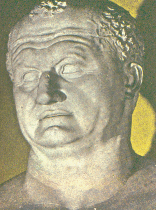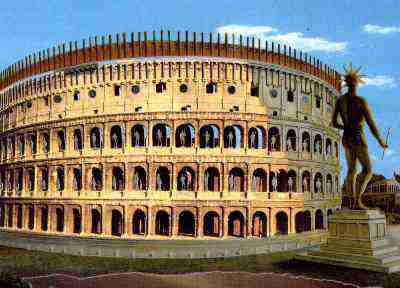| The History of the Colosseum | ||
| Home
Titus Flavius Vespasianus http://www.salve.edu/~romanemp/vescoi.gif
|
 http://campus.northpark.edu/history//WebChron/Mediterranean/Gladiators.html The Colosseum was built by Titus Flavius Vespasianus, a man who served as a soldier under Emperor Nero and later took his place. Emperor Nero was deeply hated by the Roman people, and this hatred led Nero to commit suicide with the help of his secretary, Epaphroditus. While Nero was emperor he built the Golden House, his own personal palace. Within the palace was a stagnum, or lake. It is at this site that the Colosseum was built by Vespasian, Nero's once faithful soldier. The Colosseum's technical name is the Flavian Amphitheater, so called in praise of the emperor who oversaw its creation. The Colosseum was begun in the year AD 72 and was still uncompleted at the time of Vespasian's death in 79. He was succeeded by his elder son, Titus, who undertook the completion of the Flavian Amphitheater. It was officially opened in AD 80 for the inaugural games. Although the original name of this dynamic building was the Flavian Amphitheater, several centuries after being built it was referred to as the Colosseum, a lasting title. The building received this nickname from a statue that stood near the site of the arena. According to Pearson, the statue originally was of Nero, but Vespasian changed the head of the statue to the sun god, Apollo. And it was this colossus, with Apollo's head, that gave the arena its infamous name, the Colosseum. The Colosseum was built in a valley found between the Esquiline, the Palatine, and the Caelian hills. The spot chosen, where Nero's lake used to be, was interesting and made a bold statement. Where Nero had built for his own pleasure, the Flavians built a massive structure for the public good. A reconstruction of the original Colosseum with colossal statue ( http://www.chch.school.nz/mbc/colosseu.htm ) These pages were complied by the following students of the University of Akron: Matt Clore (Senior), Heather Graham (Sophomore) and Courtney Mullen (Junior)
|
|

